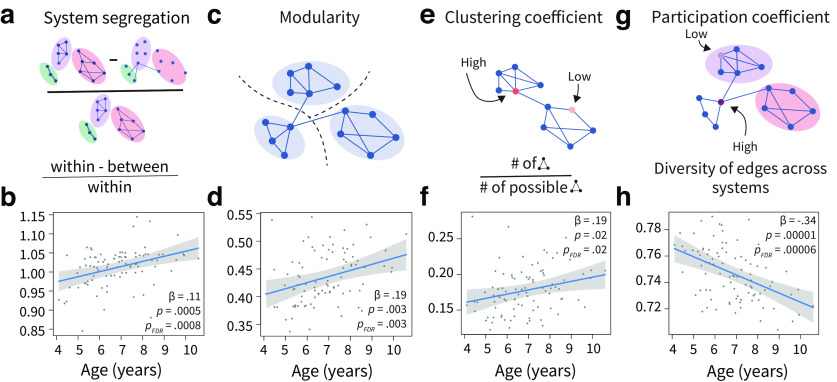Figure 1.
Functional network segregation is positively associated with age. a, System segregation is a whole-brain measure of functional network segregation that quantifies the difference between mean within-system connectivity and mean between-system connectivity as a proportion of mean within-system connectivity. b, System segregation is positively associated with age. c, Modularity is a measure of mesoscale network segregation that estimates the extent to which the nodes of a network, or in this case brain regions, can be subdivided into modules characterized by strong, dense intramodular connectivity and weak, sparse intermodular connectivity. Note that the modules are data driven, not a priori defined as functional systems. d, Modularity is positively associated with age. e, The clustering coefficient is a measure of local segregation that quantifies the amount of connectivity between a node and its neighbors. A node has a high clustering coefficient when a high proportion of its neighbors are also strongly connected to one another. In a weighted network, the clustering coefficient measures the strength of triangles around a node. f, The average clustering coefficient is positively associated with age. g, The participation coefficient quantifies the diversity of the connections of a node. A node has a high participation coefficient when it is evenly connected to many different systems. A lower participation coefficient is indicative of a more segregated network. h, The average participation coefficient is negatively associated with age. Plots show 95% confidence intervals and partial residuals, controlling for in-scanner motion, sex, total number of volumes, and average network weight.

